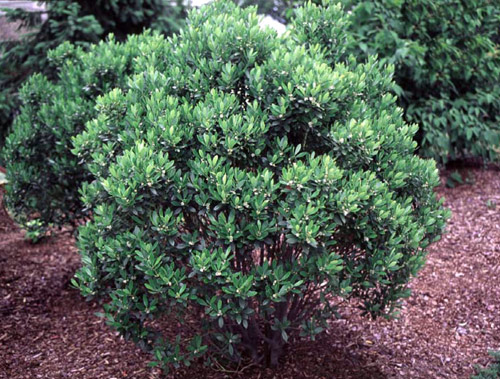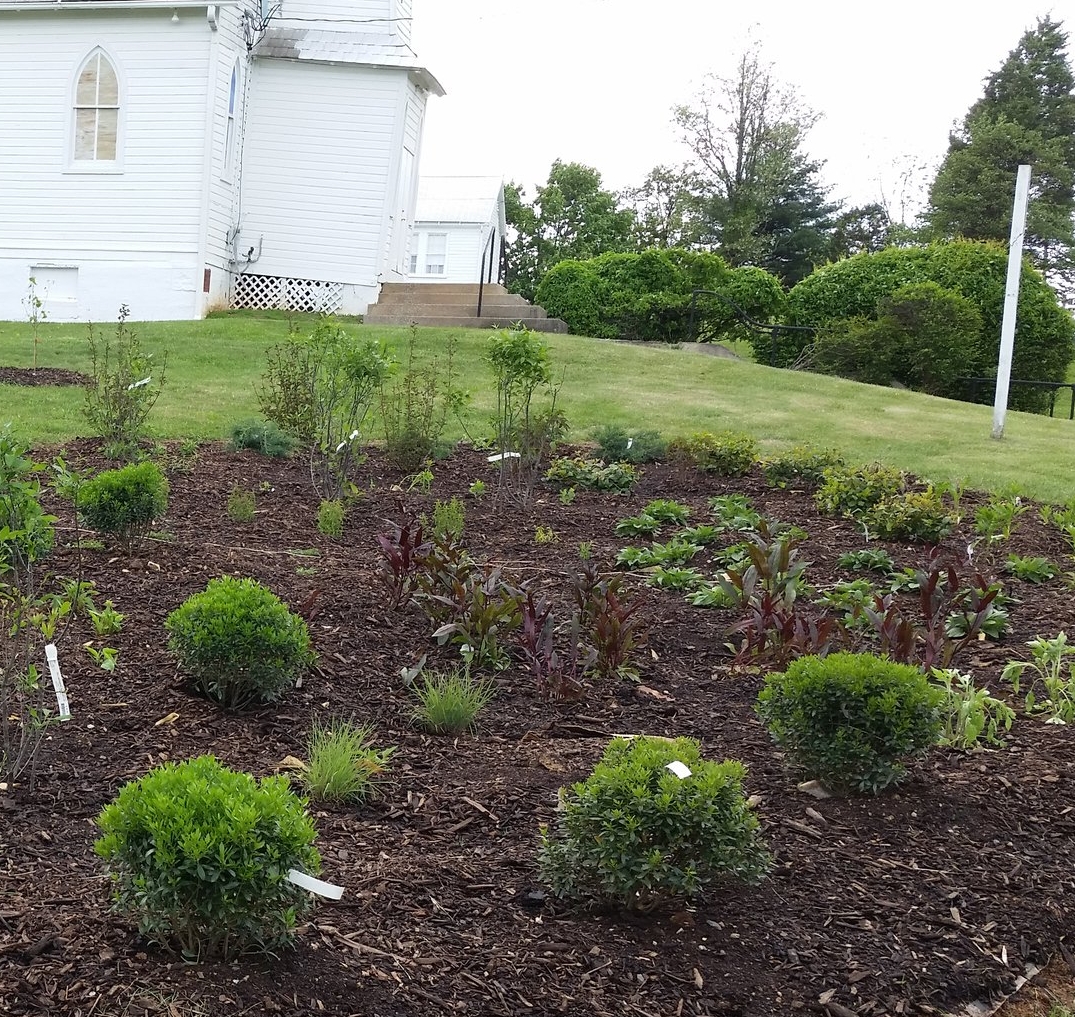On May 23, Tuesday, at 7 p.m. we will have a presentation at the historic school at Pleasant View on native plants for the home garden. Merikay will share photos and descriptions of a variety of native plants for sun/shade including some of those recently planted at Pleasant View. This blog highlights Ilex glabra, inkberry.
The cultivar selected for Pleasant View is 'Shamrock' but there are many other choices. This is a lovely evergreen shrub in the holly family that remains compact so it is low maintenance. It's also deer resistant.
Easily grown in average, medium to wet soils in full sun to part shade. Adaptable to both light and heavy soils. Tolerates wet soils. Prefers rich, consistently moist, acidic soils in full sun. Good shade tolerance, however. Inkberries are dioecious (separate male and female plants). Female plants need a male pollinator in order to produce the berry-like drupes that are characteristic of the species and cultivars. It is native to the coastal plain from Nova Scotia to Florida to Louisiana. Leaves usually remain attractive in winter unless temperatures dip well below zero.
I'm a beekeeper and have learned that inkberry honey is a highly-rated honey that results from bees feeding on inkberry flowers. This honey is locally produced in certain parts of the Southeastern U.S. in areas where beekeepers release bees from late April to early June to coincide with inkberry flowering time. Dried and roasted inkberry leaves were first used by Native Americans to brew a black tea-like drink, hence the sometimes used common name of Appalachian tea for this shrub.

